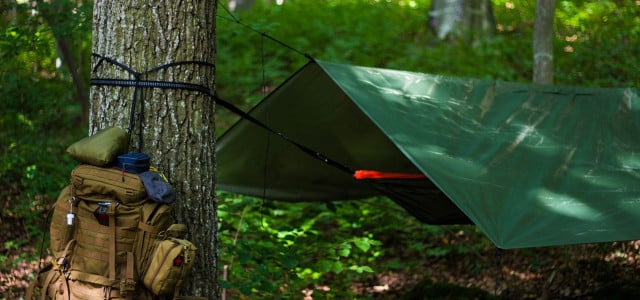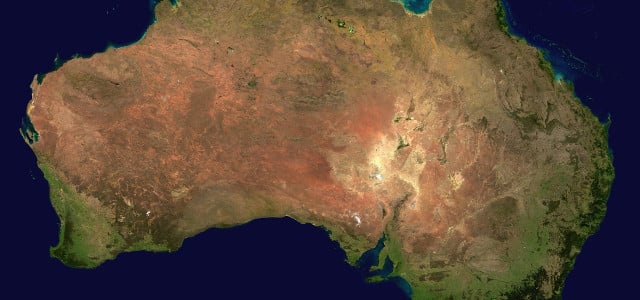What is a prepper — paranoid conspiracy theorist or practical survivor? Decide for yourself with our comprehensive account of preppers and why so many people are prepping.
What is prepping and why do people do it? It’s a controversial question sometimes. When a lot of people hear the word prepper — doomsday, conspiracy and morbidity might spring to mind. This isn’t necessarily the case, though, and the prepping movement is quickly becoming more and more mainstream than minority, fringe or extremist.
As our primary threats have evolved, so has the art of prepping. Eco-anxiety is a primary driver of prepping today — but not the only one. Whether it be war, terrorism, all types of natural disaster or a major blackout — preppers want to be prepared and help others do the same. That doesn’t necessarily mean they are all paranoid and spend life waiting for impending doom. And if they are — a lot of people appear to paranoid.
Some studies suggest there are up to 9 million Americans now engaging in prepping activities — while others estimate the figure is much higher due to the secret nature of some preppers and the stigma associated with prepping. The UK prepper movement is also growing, according to Sky News. It reports that more people are hoarding supplies at home and that online prepping forums and YouTube channels are attracting thousands of new members every week.
In recent years, prepping practices have also expanded to more affluent and wealthy social groups in Silicon Valley and New York City, among others. The New Yorker highlights that preppers exist among technology executives, hedge-fund managers, investors, and other professionals. Prepping is not confined to those in tinfoil hats with a list of conspiracies. Preppers are everywhere.
What Is a Prepper?
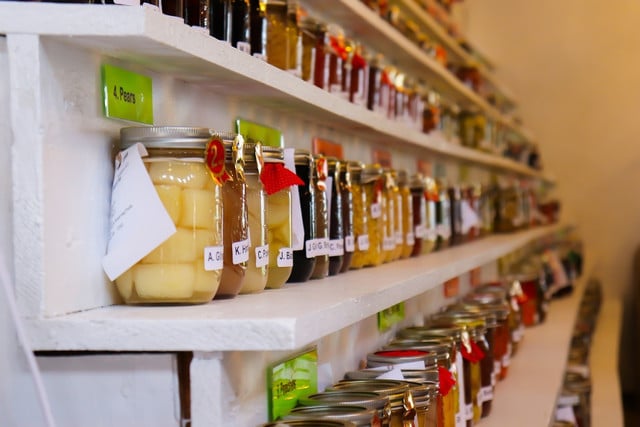
(Foto: CC0 / Pixabay / Justina_Pix)
A prepper is broadly defined by some experts as a person that is preparing for Armageddon, an apocalyptic event — or the end of the world as we know it (“TEOTWAWKI”). Doomsday and prepper are almost inseparable terms that almost roll off the tongue. This type of language might influence how non-preppers view preppers. It instills a dramatic effect — which is not entirely fair — despite being reasonably true.
In reality, preppers are simply people who anticipate and actively attempt to prepare for what they consider a probable or inevitable event that could threaten their survival or even civilization as we know it. They take precautions for an uncertain future. At its most basic — prepping simply involves cultivating preparedness and sustainable survival skills in case of a major event taking place.
Humans have actually been prepping for centuries. How and for what reason has simply changed over time. When war was the primary threat to human survival — bomb shelters, food rations and survival drills were common prepping practices. Today, many schools and organizations all over the world prepare for the worst with fire and evacuation drills.
Most preppers do go a little further than the average fire drill — but that core concept of being as ready as possible in the event of a catastrophe is at the heart of every prepper movement.
What Do Preppers Do?



(Foto: CC0 / Pixabay / MooreProtectionWien)
There are different levels of preppers and prepping. Prepping practices will usually depend on the individual person or if they are part of a group. Some — more seasoned preppers — choose to live off of the grid completely. Others simply stockpile supplies within their homes — while various other degrees of prepping take place across the globe. Generally, preppers seek to build knowledge and skills, gather and store supplies, and join together in communities that work together for the benefit of all.
Read more: The Pros and Cons of Off-Grid Living
Most preppers stockpile food and supplies — and sometimes ammunition. Many develop various survival skills — like water procurement and purification techniques, self-defense, basic medical care, communications (like short-wave radio), and how to power electrical devices without access to the electricity grid. Some might even build bunkers, air filtration systems and other forms of survival pods.
Most preppers choose to prepare for potential disaster through self-education, training, and the gathering of necessary materials to meet their own, familial, or community needs. This can include anything from non-perishable food and medical supplies to sleeping bags and tents.
Almost every prepper will possess a ‘go bag’ — also called a ‘bug-out bag‘ — that is prepared for immediate needs after a major event with survival items, food, torches, batteries, important documents and several other items. To pack your sustainable essential go bag, check out our article.
Are Preppers Survivalists?
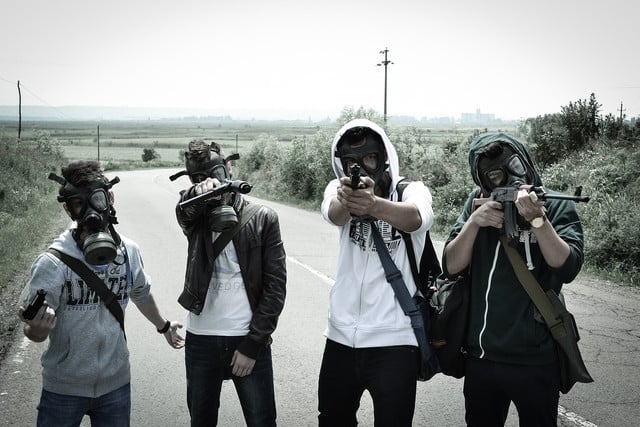


(Foto: CC0 / Pixabay / 2078645)
Sometimes the words prepper and survivalist are used interchangeably — which is not entirely accurate, despite a range of similarities. The prepper movement we see today grew and evolved from the survivalist movement several decades ago, but has since become — and identifies as — a separate entity. Both survivalists and preppers prepare for a range of possible disasters like:
- Environmental and climate chaos
- Natural disasters
- Major weather events
- Economic collapse
- Civil war
- Nuclear attack
- Antibiotic resistance
- Chronic food shortages
The survivalist movement is generally believed to have originated in the post-World War era. The Cold War and other military conflicts in Korea and Vietnam also spurred public and federal interest in disaster preparedness. Fear of catastrophe was particularly heightened during the Cold War in the 1950s — when the threat of nuclear war between the US and Russia became a real possibility. The US Government actively encouraged Americans to build bunkers, learn survival skills and essentially become preppers. A series of economic recessions also hit during and after this period — which made financial collapse look like a possibility also.
The original term used to describe survivalist practices was ‘retreater‘ — which was coined in Don Stephen’s 1967 book — Retreater’s Bibliography. The book described various practices like homesteading, how readers could build a survival retreat in a remote location, how they could generate renewable energy, and how they could live sustainably and recycle to survive. These practices are all still evident among preppers today.
The term survivalist didn’t actually emerge until the 1970s. A controversial American author called Kurt Saxon began writing a newsletter called The Survivor — which depicted retreating, but with a more military and combative approach — that included homemade weapons. Throughout the 1970s and 1980s, the terms retreaters and survivalists were used synonymously and blended into each other — until they split completely in the 1990s:
- Survivalism eventually became associated with a sometimes extreme — and highly combative approach to prepping. Survivalists range from those prepared for difficult times to white supremacists, anti-government militias, and apocalyptic cults.
- The retreaters became associated with more silent, self-sufficient, and sustainable survival skills.
Preppers appear to have grown somewhere between the retreater and survivalist movements — but differentiate themselves as preppers — not survivalists or retreaters. Some preppers do store and train in the use of firearms and other ammunition, while others engage in nonviolent, sustainable and self-sufficient approaches.
Doom, Gloom and Armageddon



(Foto: CC0 / Pixabay / viarami)
For many years, prepping carried a lot of stigma and associations with conspiracy theories, paranoia and negativity. This contributed to the popularity of the term ‘doomsday prepper‘ — which was born after a National Geographic Channel reality television series called Doomsday Preppers (from 2011 to 2014). The series followed preppers that were stockpiling supplies and weapons and carrying out drills and simulated responses to hypothetical apocalyptic scenarios.
Many researchers now argue that the show is biased toward one extreme within prepping — those that can afford the time and money to gather exorbitant amounts of material and gear and have extraordinary views on the events that would lead to using this material and weaponry.
This negative view of preppers has also been shown in some research. One study published in the European Journal of Personality would suggest that prepping beliefs are associated with:
- low agreeableness and humility
- paranoia
- cynicism
- conspiracy mentality
- conservatism
- social dominance orientation
- negative daily experiences
- global political events
- grounded less in rational concerns than observational learning
Research also suggests that European preppers view American prepper culture as political, religious, weaponized and misogynistic — and state that the media attention this perceived American version of prepping receives delegitimizes their practices. Due to the wide range of prepping and survivalist approaches — and their parallels — it’s clear that the potential for stigma and misinformation is high.
A negative view of preppers does exist in some sections of society. Clearly, as in most movements, some preppers do exhibit negative and unhealthy traits. But does this mean that the millions of people that are prepping all over the US are weaponized, suffering from mental health problems and exhibiting extreme views? Are they paranoid and cynical? Or are they realistic? Let’s take a look.
Prepared or Paranoid? Rise of the Preppers
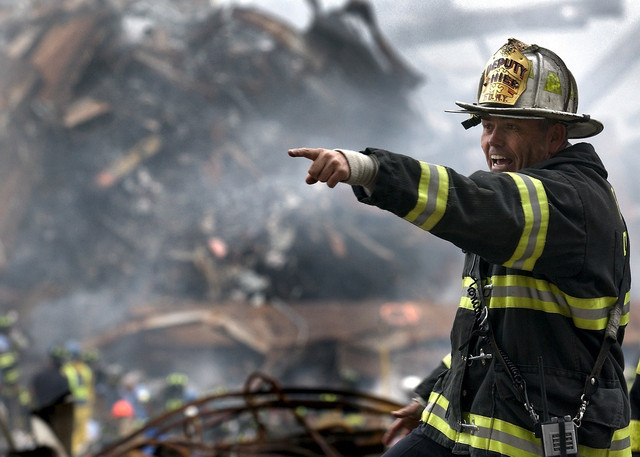


(Foto: CC0 / Pixabay / 12019)
Other experts would argue that to study prepping now would be “timely and valuable.” The authors describe that many preppers were well-prepared for the COVID-19 pandemic, which they consider a ‘mid-level event’. Even the CDC has resources in relation to a variety of emergency scenarios that include many prepping practices. It recommends: “Be prepared to protect your own and your family’s health from the impacts of a disaster or an emergency on the public health and healthcare systems.”
A variety of events have contributed to this more practical and positive view of preppers — such as:
- Recession
- The terrorist attack on 9/11
- The raging climate crisis
- Boxing Day tsunami in South East Asia in 2004 that claimed the lives of over 220,000 people.
- Hurricane Katrina, Harvey and many other natural disasters
- Russian war on Ukraine
- Energy crisis
- Cost of living crisis
- Fuel shortages
- COVID-19 pandemic
- Global geopolitical instability
The pandemic, however, really put preppers in a new light. COVID-19 showed that global disaster was a very real threat and that the prepping movement was no longer a conspiracy of a global apocalypse. It was prepared — and it exploded over social media. This resulted in not only a rise in the prepper population but also a more positive public view of those who prep.
Michael Mills — a UK University of Kent researcher — also boosted preppers and their reputation. He called many biases into question with his research when he went on an American road trip with 39 preppers in 18 different US states. After the study (unlike the Doomsday Preppers series), Mills suggests that preppers are not driven by rampant paranoia but instead motivated by non-stop media coverage of natural disasters — as well as a government that encourages them to prepare for the worst.
So, the question lies in whether preppers need to be prepared or not.
Conspiracy vs Reality
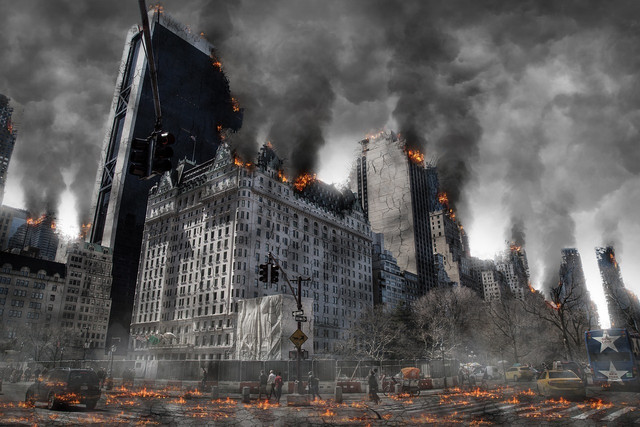


(Foto: CC0 / Pixabay / TheDigitalArtist)
Preppers are preparing for a range of catastrophes. Research suggests that the most major events to be anticipated by preppers were those most likely to occur in their locale — including house fires, strong storms, flooding, tornados, and earthquakes. Does this make them conspiratorial and paranoid, or is a major incident likely? Let’s see what the experts say.
Current potential candidates for global disaster range from volcanic eruptions to pandemic infections, nuclear accidents to worldwide tyrannies, and out-of-control scientific experiments to climatic changes. That’s without mentioning cosmic hazards and economic collapse. Most of these risks influence each other. It is theorized that the top four most likely global catastrophic risks are:
- sea level rise
- volcanic eruption
- a pandemic
- a geomagnetic storm
The Global Challenges Foundation adds to this list: climate change, weapons of mass destruction, and ecological collapse.
Current evidence shows:
- Rising global temperatures
- Longer and more extreme droughts around the world
- More severe tropical storms due to warmer ocean water temperatures
- Faster melting of polar regions and glaciers
- Sea ice in the Arctic Ocean around the North Pole is melting faster due to warmer temperatures
- Melting permafrost is releasing methane into the atmosphere
- Sea levels are rising
Global warming exacerbates a lot of things, and the US has been experiencing rapid warming since 1979 — which presents major problems. Over the past decade, daily record high temperatures have occurred twice as often as daily record low temperatures.
Just a few of the current predictions include:
- The Planetary Health Alliance highlights that global economic losses from natural disasters are occurring with increasing severity, scope and impact at a 10-fold rate over the past forty years.
- 143 million people are predicted to be forced into migration by rising seas, drought, searing temperatures and other climate-related events.
- Many predict a US-China war by 2025, and geopolitical instability is evident across the globe — to the point that the theme of the World Economic Forum’s 2023 Annual Meeting was Cooperation in a Fragmented World.
The evidence would overwhelmingly suggest that preppers are not preparing for unlikely major events. Our unfortunate and devastating reality is that a variety of catastrophes threaten our existence on this planet. Preppers do not tend to exhibit climate change denial and just want to be prepared in the event of a disaster. Despite all of these predictions and scientific-based facts, though — many preppers still face media ridicule and academic dismissal. However, as the movement continues to gain popularity and fair, unbiased coverage — many positive views, accounts and expert opinions about preppers are beginning to emerge.
Positively Prepping



(Foto: CC0 / Pixabay / Alexas_Fotos)
The mass consumerism and panic buying during the pandemic created what is known as a bullwhip effect — whereby changes in consumer demand created disruptions that rippled through the whole supply chain. Preparedness and gradual stockpiling meant that preppers did not need to engage in panic buying when supplies were challenged. Thus, prepping helped to reduce this bullwhip effect — as well as the risk of infection after leaving home. This is just one example of positive prepping effects, and there are a few more.
Many now commend preppers — from individuals to small groups — for their focus on both learning and spreading their prepping practices and for attempting to build resiliency within their communities. They have been praised for their thoughtful engagement and for finding meaning and community vitality during a crisis. Community preparedness could save countless lives in the event of a disaster occurring.
Being prepared can also bring a sense of control and stability to individuals and communities during the most devastating times. Some of the darkest days in American history — like 9/11 — displayed the power of community spirit, and most preppers appear to offer it in abundance.
According to The Provident Prepper, preppers “reach across the barriers of age, race, culture, socioeconomic status, and religion” to help and support each other every day — and not just during a crisis. They positively influence their local areas in a variety of ways. For example, preppers bring many types of volunteer services to the community during or after a catastrophe — like self-sufficiency, rescue and first aid.
Others view prepping as a positive form of activism against capitalism and consumerism — and the myth of endless resources. This is in view of the abundant sustainable practices involved in training for living and surviving without endless resources. Many experts warn our mass consumerism is driving climate change and environmental chaos.
Most preppers value resources and reduce waste. For example, they forage, reuse, generate renewable energy and procure water. They do not rely on energy grids, Wi-Fi communications or an endless supply of perishable food. Because a crisis might enforce sustainable living by cutting off all essential and non-essential services — preppers live and train in ways that support healthy human-environment interactions and might even help us achieve our climate targets.
Perhaps a rise in good old-fashioned doomsday prepping isn’t a bad thing after all. But is it the answer to our climate crisis and the threats it brings?
Limitations of Prepping
Research and predictions would suggest that preparedness can save lives and even enhance community cohesion and survival skills. It is not simply designed for the paranoid people that are awaiting Doomsday. Like every section of humanity, some preppers are extreme and perhaps fanatical. Overall, however, prepping is becoming mainstream as the realities of our climate catastrophe also become mainstream.
Prepping for disaster, particularly in sustainable and self-sufficient ways, does not appear to be a negative or morbid practice and may help you and your community if disaster strikes. The reality is, though, that it is not enough. The climate crisis demands climactic action from all of us — from the governmental to the local level — and there is much that you can do at an individual level to go beyond protecting yourself and those you love.
There are many ways to get involved in environmental activism in 2023 if you want to help save the rainforest, save the ocean and save those you love. The Rights of Nature movement is just one of many NGO and non-profit organizations worth supporting and we have an endless range of articles to help you get started on your eco-warrior journey to sustainable survival.
You can even take action with 15 everyday ways to combat climate change. You could join a local environmentalist group, volunteer virtually or adopt a zero-waste lifestyle. If you want to enhance the positive effects prepping has on communities — why not start an agrihood or some urban gardening? Check out our article on The City Garden Movement for some inspiration.
Every little bit helps, so even if you just find some sustainable plants for your balcony or switch from flying around the world to staycations — you’ll be making a difference. There are many ways to reduce your carbon footprint. If we all do more, we will need to prep less.
Read more:
- Fortress Conservation: Key to Saving the Planet or Human Rights Abuse?
- Suburban Sprawl: Definition, Problems and Solutions
- How to Save Energy with These Thermostat Settings for Winter
Do you like this post?






